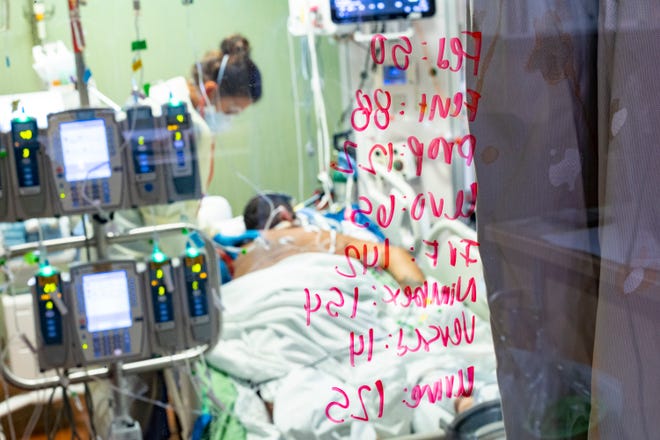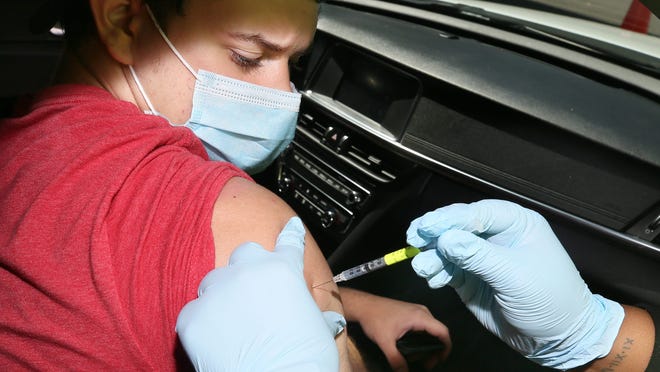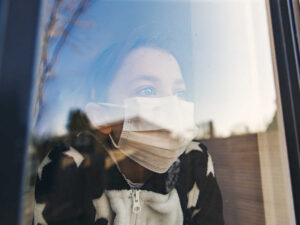Idaho is allowing healthcare facilities to ration care due to the surge of COVID-19 cases that has more people needing care than institutions can handle.
The Idaho Department of Health and Welfare quietly enacted the move Monday and publicly announced it in a statement Tuesday — warning residents that they may not get the care they would normally expect if they need to be hospitalized.
The move came as the state’s confirmed coronavirus cases skyrocketed in recent weeks. Idaho has one of the lowest vaccination rates in the U.S. with 744,460 of its 1.78 million residents — or about 42% of its total population — fully vaccinated.
Rationing care is the last resort for hospitals and other healthcare facilities but a number of states were forced to enact similar measures throughout the pandemic or weighed rationing care in recent weeks as the number of COVID-19 infections overwhelmed hospitals.
The move allows hospitals to allot scarce resources, like intensive care unit rooms, to patients most likely to survive and make other dramatic changes to the way they treat patients. While others will still receive care, patients may be placed in hospital classrooms or conference rooms rather than traditional hospital rooms or go without some life-saving medical equipment.
Also in the news:
►Kentucky has reported more than twice as many COVID-19 deaths this year as it did in all of last year, Johns Hopkins University data shows. The state reported 2,623 deaths last year. As of Tuesday, the state has reported 7,905 deaths.
► After a sluggish start, the European Union’s COVID-19 vaccination drive has now surpassed the U.S. About 60% of the population has been fully vaccinated compared to 53% in the U.S.
►COVID-19 killed an average of one Floridian about every four minutes last week, but information on how many people are dying every day in local communities is hard to find. The state has provided incomplete or inconsistent data.
📈 Today’s numbers: The U.S. has recorded more than 40 million confirmed COVID-19 cases and more than 650,000 deaths, according to Johns Hopkins University data. Global totals: Nearly 222 million cases and 4.5 million deaths. More than 176 million Americans — 53% of the population — have been fully vaccinated, according to the CDC.
📘 What we’re reading: Officials in India are racing to contain a virus outbreak that has claimed the life of a 12-year-old boy and is deadlier than COVID-19 — the Nipah virus. Here’s more on the deadly virus, which might have the same origins.
Keep refreshing this page for the latest news. Want more? Sign up for USA TODAY’s Coronavirus Watch newsletter to receive updates directly to your inbox and join our Facebook group.
CDC says two prime tourist spots are at ‘high risk’ of COVID transmission
The traditional summer travel season ended with Labor Day weekend, and maybe that’s just as well considering the shrinking number of safe places to visit.
The CDC on Tuesday added Jamaica and Sri Lanka to the list of places it recommends people don’t travel to due to a high rate of transmission of COVID-19.
It’s recommended people avoid travel to both places, which are on different sides of the world but popular tourist destinations. The CDC says even those who are vaccinated “may be at risk for getting and spreading COVID-19 variants” due to the levels of transmission.
The CDC had already added Puerto Rico and the Bahamas on that same list the previous two weeks. France, Switzerland, Israel, Aruba, Thailand, Greece and Ireland also became non-advisable destinations in August, according to the CDC.
Spain, Costa Rica, the United Kingdom and Portugal have also landed Level 4 designations by the CDC, meaning a virus transmission rate of more than 500 per 100,000 people in the previous four weeks.
Planning a trop to Maui? You might have to be vaccinated.
Snagging restaurant reservations and bookings for popular tourist activities has been a struggle for visitors to Maui this summer and it’s about to get more difficult as Hawaii grapples with a COVID surge it largely escaped until the past several weeks.
Beginning Sept. 15, those who want to dine inside at restaurants and bars must show proof they are fully vaccinated. Those who aren’t vaccinated will only be allowed to dine outside, where applicable, or order takeout. Children younger than age 12 are exempt.
Bars and restaurants must also close by 10 p.m. beginning next week.
Many tourist activities will also see cuts in capacity. Group sizes on tours, snorkeling excursions, fishing expeditions, sunset sails and other excursions, as well as ground transportation providers, will be limited to 50%, down from the current capacity limit of 75%, to promote social distancing.
The new restrictions, which will be in place for at least 30 days, were announced late Tuesday by Maui County Mayor Michael Victorino and other government officials.
“If the (COVID case) numbers don’t come down over the next 30 days, we may have to implement stricter rules and stricter mandates,” he said.
– Dawn Gilbertson
Contributing: The Associated Press




















